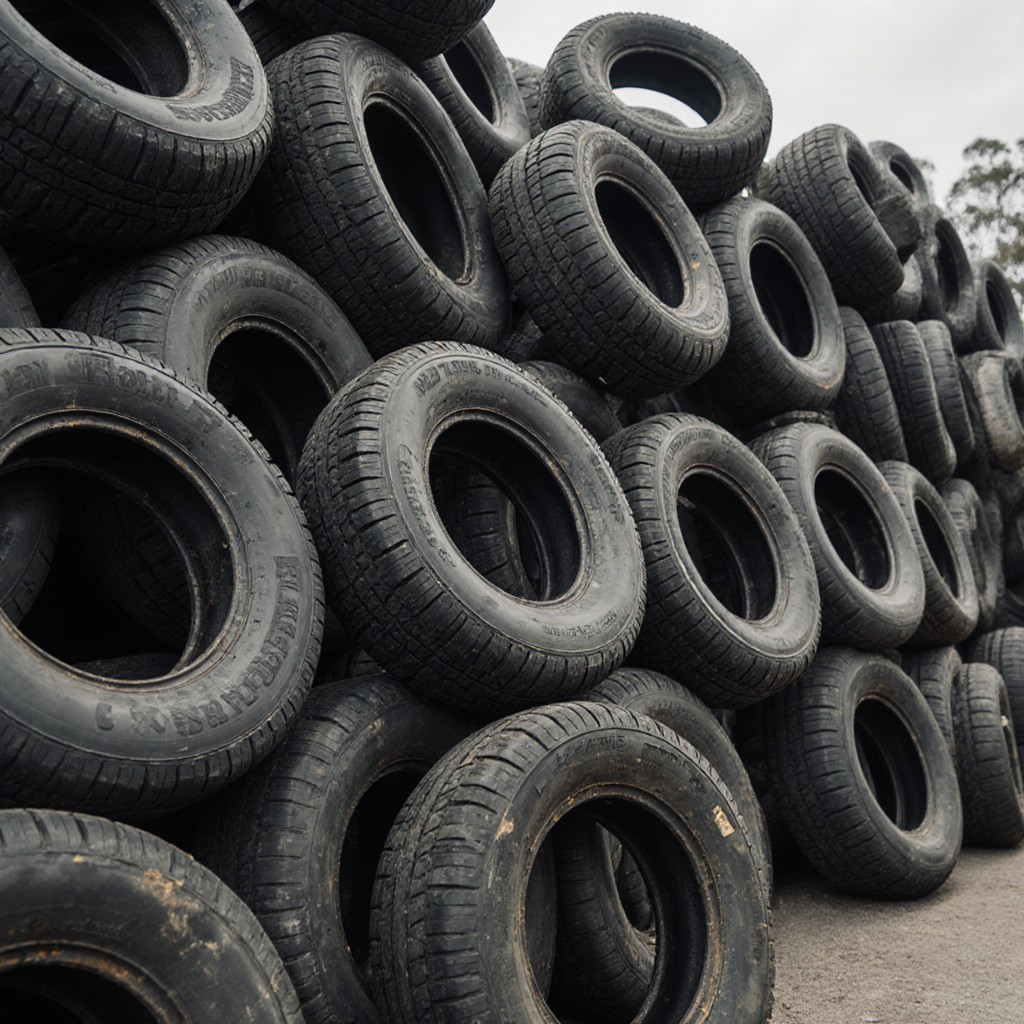Answers For VOL 5 Test 1 - Recycling Tyres in Australia
Answers and detail explain for VOL 5 Test 1 - Recycling Tyres in Australia
1.
month
2.
profit
3.
size
4.
research
5.
wires
6.
dirt
7.
plastic
8.
floor
9.
water
10.
ink
Explain
VOL 5 Test 1 - Recycling Tyres in Australia

0:00
0:00
Managing Director: Good afternoon. I'm the Managing Director of Melectra Technologies and we're involved in recycling tyres from vehicles such as cars and trucks. This might not sound new or exciting, but the method we use is quite radical compared to traditional tyre recycling methods. We strongly believe... that the business of recycling tyres is crucial, as amazingly, 1every month in Australia alone, the number of old tyres that are discarded exceeds 1.5 million.
And, when you look at the figure globally, it is a staggering 1.2 billion each year.
For decades, various recycling methods have been trialled with varying degrees of success. In some cases... The solution was as bad as the problem.
Incinerating tyres, for example, generates toxic fumes which are harmful to the environment. Breaking up whole tyres is energy intensive and produces a contaminated product with very little value. 2As a result, there was little incentive to get into the business because there was no profit in it.
And yet, a tyre is made up of so many valuable components. and it is for this reason that we started trying out new recycling methods. In the end, our factory came up with a much improved system for recycling old tyres. The Melectra process is different for a number of reasons.
Firstly, it is a lot cheaper to run because our machines are much more compact in comparison to traditional systems. This in turn reduces energy consumption. The wear and tear on the shredding equipment, which cuts up the tyres, is also reduced, as the tyres fed through them have already been softened. Costs are reduced by over 30% using our system.
3And, significantly, our machines can handle a tyre of any size, from the smallest bicycle or wheelbarrow right up to the largest earth-moving truck. Most other processes can only handle car tyres. Our technology has proven to work. and we have won many awards, including the Australian Museum's Eureka Award, and last year on a national TV programme, we were chosen as the Invention of the Year. Winning that certainly opened many doors for us, with interest coming from 27 countries around the world, including the United States and China.
To cope with the demand... we will soon have 10 more factories which will operate 24 hours a day just to stabilise the current stockpile. 4We are passionate about taking this process further, and so we have chosen to dedicate 5% of every dollar we make to research. In this way, we can ensure we are always the best in the business.
So... Let's look at the process we use, what we extract from the tyre in each stage of the process, and the uses that those materials can be put to. 5The first step of the process mechanically extracts the steel wires from the rim of the tyre. This high-quality wire can be cut into small pellets suitable for sandblasting shots.
Next, after the tyres have been sliced into a number of segments depending on tyre diameter, they are chemically treated. 6This chemical treatment is essential as it removes dirt from the rubber prior to the rest of the process. The cleaning process also softens the tyres, making them easier to chop up. In the next stage, the fibre cords contained in the tyre segments are separated from the rubber using rollers. 7The fibres, which can include nylon and rayon, can be used as a reinforcement for concrete or they can be used to form plastic panels.
Then, the rubber is cut up into very small pieces known as crumb rubber. For a tyre weighing 10 kilograms, Melectra can recover 7.5 kilograms of crumb rubber that can be used to manufacture a range of rubber products, such as asphalt, used in road making. 8It is also used as insulation in buildings, or something simple like tiles for the floor.
Alternatively, any or all of this crumb rubber can continue through to the final stage. This final stage involves our patented Melectrovac machine, which uses industrial microwave energy. This changes the remaining rubber into hydrocarbon, which can be used to make three different products. We can cheaply produce activated carbon, which is usually quite expensive to make from new materials. 9It's used for treating water, as well as being an integral part of air filters.
10Secondly, as the carbon produced is very pure, in fact it's over 97.4% pure, we can crush it to form something called carbon black, which is used in the manufacture of batteries and also ink. Our process is very flexible, and we can alter the quantity of each of the three products depending on demand.
Finally, we can even use the hydrocarbon to make oil. And we use this to generate electricity to power our own machines. It certainly helps to keep the costs down. And that's just about it. So if there are any questions...
Questions 1-4
Complete the notes below. Write ONE WORD ONLY for each answer.
Recycling Tyres in Australia
Background
- More than 1.5 million tyres dumped in Australia per 1 (month)
Previous recycling attempts failed because:
-
there were pollution problems - smoke from burning
-
recycling companies didn't make any 2 (profit)
Advantages of Molectra's process
-
More economical because smaller machines are used
-
Less maintenance - tyres softened before shredding
-
No limit on the 3 (size) of tyres recycled
The Future
-
Ten more factories being built
-
Plans to spend 5% of income each year on 4 (research)
Questions 5-10
Complete the flow chart below. Write ONE WORD ONLY for each answer
Process |
|
Possible Uses |
|
Removal of steel 5 (wires) from tyre rim
|
==>
|
Steel pellets used in industry
|
|
|
|
|
|
Chemicals applied to get rid of 6 (dirt) and soften rubber
|
|
|
|
|
|
|
|
Fibres, e.g. nylon, removed
|
==>
|
|
|
|
|
|
|
Tyres cut up into crumb rubber
|
==>
|
|
|
|
|
|
|
The MolectraVac machine microwaves rubber into hydrocarbon
|
==>
|
i) Used for activated carbon
ii) Used for carbon black
iii) Oil used for electricity
|
![[Forecast Q2-2025] - Biology lecture](https://static.helik.app/reading/8fd3d7d2-ccf9-47a3-8920-2e7a3b0d6607)
![[Forecast Q2-2025] - Living in the City](https://static.helik.app/reading/1a60bcf3-f3a7-4e9b-97a2-94d156a0de3b)
![[Forecast Q2-2025] - Student Union](https://static.helik.app/reading/fb443123-8c1d-447e-8c79-5a01650f4754)
![[Forecast Q2-2025] - Fruit-picking Job in an Orchard](https://static.helik.app/reading/e1968346-6c55-44ae-b8d3-f6a4fb7207b9)
![[Forecast Q2-2025] - University Crime Prevention](https://static.helik.app/reading/bdda593e-16d6-4c72-8a12-b116e917b27c)
![[Forecast Q2-2025] - Business Course](https://static.helik.app/reading/3308e282-99a6-4bcb-9d22-0b488701d968)
![[C20T1] - Choosing a restaurant](https://static.helik.app/reading/e9b21123-c43c-42fb-88b7-5d0be3a37e03)
